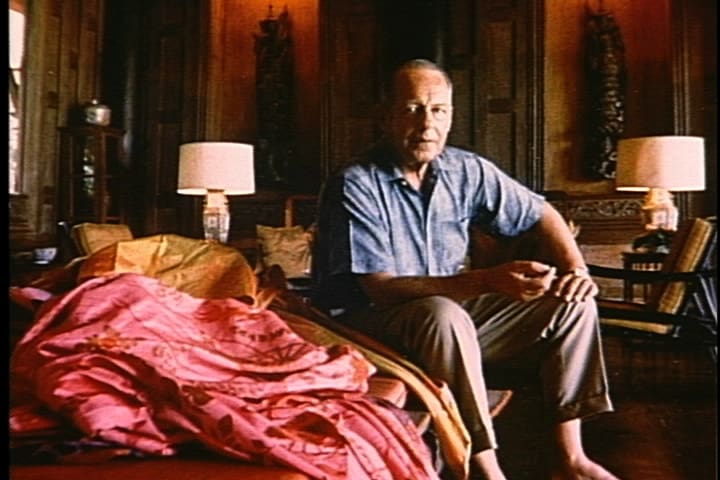Indian Art
The history of painting in India goes back 2000 years, something that many do not realize, starting with the beautiful murals of Ajanta, which are interesting too because they show people wearing craft still extant. The 11th century saw the illustrated Pala manuscripts, painted on palm leaves, and the earliest example of miniature painting in India. The next development was the Jain school of Gujarat, which eventually lead to the Rajput tradition of miniature art. As it grew and developed, the Rajput tradition divided into two distinct schools, Rajput and the Pahari school, based in Himachal Pradesh, the hilly state in the north-west of India.
Jim Thompson: Hours to kill at an airport when you’re waiting for a flight is usually a time filled with tedium. But not when you’re at Bangkok airport. Reason? Several Jim Thompson boutiques are scattered over the shopping concourse, leading to hours of pleasurable browsing and shopping.

 Jim Thompson was not born a designer. He studied architecture at Princeton and eventually enlisted in the Delaware National Guard in 1940, leading to a posting in Thailand with the ending of World War 2. While he was in Thailand, he was very taken with the country’s lifestyle and culture and chose to settle there.
Jim Thompson was not born a designer. He studied architecture at Princeton and eventually enlisted in the Delaware National Guard in 1940, leading to a posting in Thailand with the ending of World War 2. While he was in Thailand, he was very taken with the country’s lifestyle and culture and chose to settle there.There is something about the miniature, but perfect and complete that gets me every time. And I know I’m not the only one. Is it an adult fascination with dollhouses? Or the desire to control a tiny universe? I don’t know. But Micromosaics have always fascinated me.
MUGHAL & DUTCH: A CULTURAL BRIDGING OF 2 GREAT ARTISTIC TRADITIONS
THE MUGHAL EMPERORS LOVE FOR BEAUTIFUL FLOWERS AND FLORAL DESIGNS
Mosaics have been around from the third century BC, particularly in Ancient Rome, composed of glass and terracotta. However, they came into their own in the Byzantine era, where they adorned the churches. This tradition was continued during the Renaissance, as in the ceiling of St Peter’s Basilica by Michaelangelo.
Jacobean Embroidery : We live in our current times in houses or apartments, which are fully furnished, heated in winter, and adorned extensively with textiles for aesthetic reasons and utility. But there was a time in England and the rest of the world that houses were draughty, furniture scarce, and cloth was restricted to wool, linen, and silk. There were rushes on the floor, which dogs and often people would relieve themselves in, making interiors malodorous. People often shifted from one house to another, an itinerant lifestyle because homes became quickly unhygienic.

Bābur supervising the laying out of his Charbagh The Garden of Fidelity. Opaque watercolor and gold on paper
India – ca.1590
Artists: Bishndas and Nanha From the V&A
Mughal Floral Designs – South Asian art has always been full of floral images, but this reached its zenith in the Mughal empire. During the 330 years that the dynasty ruled, most magnificent art, architecture, and craft that the world has seen were produced, and much imagery used was from flora, particularly in the reigns of Jahāngīr and Shah Jahan. However, Bābur, Humayun, and Akbar are all recorded as profoundly interested in gardens and flowers. One of Babur’s first actions in India was to make a garden, the Charbagh.
The popularity of floral motifs in Mughal art was because traditionally, living creatures and humans were not supposed to be depicted in Islamic art. Therefore, the plant kingdom provided subjects that were non-controversial and capable of stylization.
Textiles of Africa occupy a unique spot in the history of world textiles: Their use ranges from clothing, tent awnings, wall hangings, and bed covers: they also indicate the wealth of the owner, and in many cases, his social standing and possessions. Historically, textiles in Africa have also been used as currency. Therefore it is a pity that most western perception of this genre centers on its ‘craft.’ Of course, African textiles are craft-based, but they are so much more than that.
Africa is a massive continent, with immense cultural and geographical diversity, so the only way to examine its textile traditions in such an article is to divide the elements under heads: (more…)
To understand Art Deco textiles, we must look at the movement and its background as a whole. The early 20th century was a period of intense intellectual adventure and rebellion, reflected in the arts. Cubism and Fauvism both flourished at this time. Designers experimented across genres: painters designed fabrics, and architects worked with furniture. (more…)
Last week, I had written about dyes extracted from animals. In continuation of the story of natural dyes, I will describe the primary dyes extracted from plant sources and the often violent history associated with at least one of these. (more…)
Can you imagine a world where all our apparel, our interiors, the objects we use in our daily lives were a uniform white or grey? We take color so much for granted that we cannot imagine that this was the case at the dawn of humanity. As civilizations started flourishing in Asia and Egypt around 2500 BC, the human need for adornment and self-actualization asserted itself in the first use of color. (more…)





